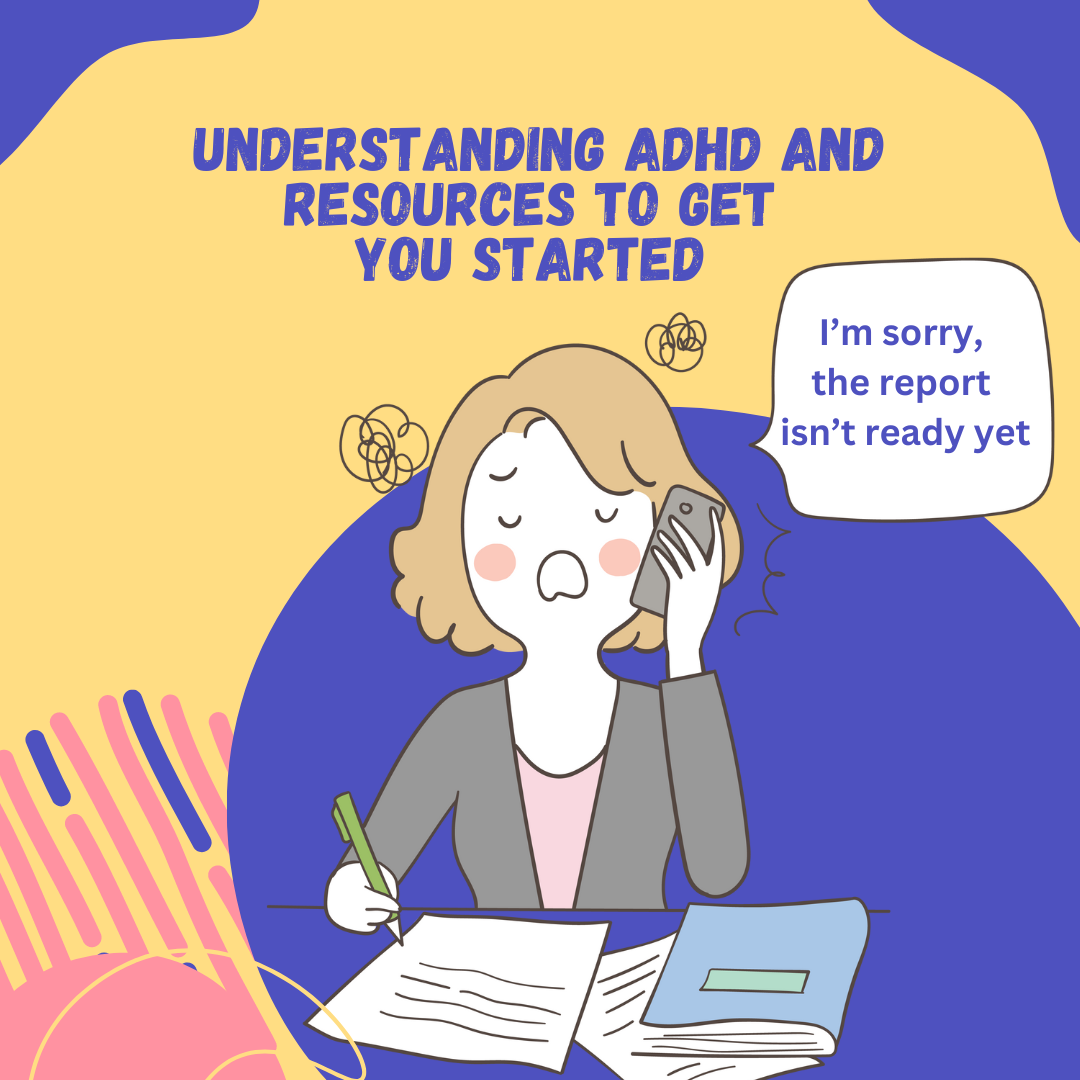Attention-deficit/hyperactivity disorder (ADHD) is something I began treating in my practice due to the comorbidity I’ve seen with anxiety and depression. It is something I have dealt with my entire life, both on and off medication support. Symptoms of ADHD include inattention (not being able to stay focussed), hyperactivity (excess movement that is not appropriate to setting) and impulsivity (A problem with emotional or behavioral self-control). There are 3 types of ADHD with these symptoms: Predominantly Inattentive presentation, predominantly hyperactive/impulsive presentation, or combined presentation. You can take the Adult ADHD Self Report Scale to get a better idea for where you fall. Keep in mind, this is not a diagnosis and you still need to be evaluated by a professional. Here is more info on the ASRS which was developed by the World Health Organization.
ADHD is often first observed in the school setting. This is why, if you are an adult, you will be asked about your history of ADHD symptoms and experience in school. The current requirement for an ADHD diagnosis include symptoms present before age 12. Many professionals in my field question whether this requirement should stay, as a diagnosis like anxiety and depression can be diagnosed later in life and many researchers find that onset may appear later. Listen to episode 136 of the ADHD Experts Podcast for more information. It is important to understand that symptoms may look different by age and gender. Boys tend to be more hyperactive and have more externalized symptoms whereas girls tend to be more inattentive and exhibit internalized symptoms.
Comorbidity and misdiagnosis can occur because symptoms of ADHD can overlap with or cause symptoms of other mental health disorders such as trauma, anxiety and depression. This is why you won’t want to take the ASRS checklist at face value and need to meet with a professional for a diagnosis. ADHD is a brain-based disorder. Trauma is the aftermath of exposure to stressful events or experiences (ADDitude Mag). Anxiety is about worry and a perceived response to risk or threat. The comorbidity for anxiety and ADHD is even more prevalent. With so much difficulty with things like tardiness, organization and procrastination, the result is often frequent worry. Similarly, the difficulty that come with ADHD may often contribute towards feelings of inadequacy and low self-esteem, which may lead to or exacerbate symptoms of depression.
So how do we tell if it’s one, the other or both? Psych testing is helpful or you work to treat them both. When it comes to medication, that will likely be something you need to discuss with your psychiatrist. It has been my experience with my clients that unless they have a history of diagnosis or exploration in school age years, the psychiatrist may refer out for psych testing. So, if you or your child are in school and you question the presence of ADHD, get started on testing and make sure to enroll with disability services which will allow more security and accomodations. When it comes to treatment, individuals with ADHD tend to struggle with organization and self-management, encompassed in the executive functioning skills listed below (Cognitive therapy for adults ADHD: Targeting executive dysfunction, Mary V. Solanto). This is what I work on with my clients by teaching and focusing on different techniques and systems that help strength executive functioning. Keep in mind that different professionals will categorize and name the below differently, but it’s all relatively the same.
- Self-inhibition
- Resistance to distraction
- Working memory
- Attention shifting
- Organizing
- Planning
- Self monitoring
Shame is common amongst individuals with ADHD. It’s hard to grasp why it’s harder for them than other people to do things. They may have dealt with frustrated parents and teachers who also don’t understand. An important part of the journey is self acceptance and the understanding that you can’t do anything about the brain you got, so you might as well learn to work with it. Radical acceptance, my friends. Working on skills and systems to address the above executive functioning skills will help. As a CBT therapist I also spend time focusing on automatic thoughts and self stories that may contribute towards shame, or feeling stuck around ADHD. Self compassion is a large part of the work I do with my clients.
Want help working on executive functioning skills? Make an appointment today! Otherwise, keep scrolling down for some resources to get you started.
Here are some resources:
Online Magazine:
ADDitude Mag, sign up for Access to information and resources about ADHD.
Podcast:
ADHD Experts: Many are great but here are a few to get you started: #130 #135 #136 #143 #163 #171 #204 #239
Videos:
Body Double:
A body double is someone who sits with a person with ADHD as they tackles tasks and provide support in their completion or focus on the task. If you don’t have a person to help, use Focusmate, a website where you can be connected to a peer for focus sessions with an accountability partner.
The “Pomodoro” technique:
- Set a timer and put it in a visible area
- Focus on your work until that timer runs out
- Take a relaxing break
- Repeat for as long as necessary!
- Resources: Forest app, Focus keeper website or buy a timer on Amazon.
- (The work to break ratio is as follows: Breaks= 1/5 of your work time, so 25 minutes of work = a 5 minute break, 60 minutes work = 12 minute break, and so on.)
Planners:
There are a ton out there. Find the right one for you. This one is nice because it has break down of time for day and room at the bottom. Here is another hourly one. This one is not hourly, and alsa has space for tasks lists and prioritization.
Sources:
Cognitive therapy for adults ADHD: Targeting executive dysfunction, Mary V. Solanto

